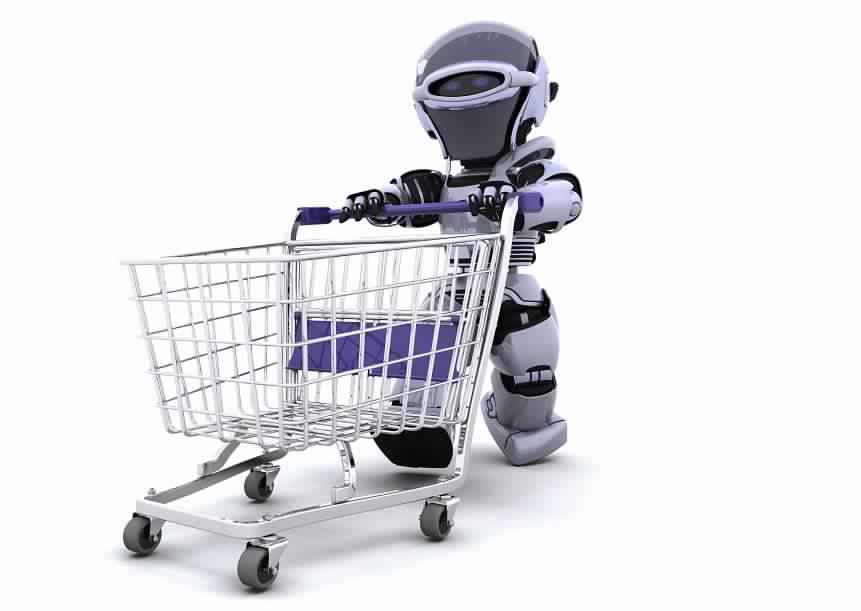Smart Retail: Indian Malls Go Hi-Tech To Woo And Wow Shoppers
Share Smart Retail: Indian Malls Go Hi-Tech To Woo And Wow Shoppers
The e-commerce revolution and the upsurge in digital technologies are fundamentally transforming shoppers’ expectations.
This transformation also has a major bearing on the function of brick-and-mortar stores, which now need to render more useful and entertaining customer experiences.
As trends advance globally, mall operators are forced to rethink and re-strategize as to how they must design, enable and operate their physical stores.
The Advent of ‘Smart’ Stores
In today’s digital era, physical stores are getting ‘smarter’ by using technologies like robotic intelligence, analytical data and consumer-centric platforms such as Augmented Reality (AR) or Virtual Reality (VR) to attract customers and give them an impactful experience.
By uniting conventional methods with key success elements of the digital ethos, brick-and-mortar retailers, in fact, have an advantage over e-commerce, as they can offer mall visitors an experience that vastly surpasses that of online shopping.
Information technology can be effectively used to tap into tech-savvy consumers’ predilections with appropriate tech-enabled in-shop ‘responses’.
Numbers suggest that consumer expenditure in India will rise to US$ 3,600 billion by 2020 from US$ 1,595 billion in 2016. If mall operators and the retailer tenants get their strategy right, they are definitely poised for retaining and adding customers.
Today, a tech-enabled retail environment equals repeat visits, increased footfalls and higher sales.
Tech Adoption Done Right
A classic example of creating a differentiated experience for consumers is seen in Kochi’s Lulu International mall, which numbers among the largest malls in India.
This mall uses advanced technologies Automatic Number Plate Recognition (ANPR), geo-fencing and digital beacon technology to engage with mall visitors and inform them of the latest promotional activities and deals available in the mall.
Consumer-centric tech platforms like AI (artificial intelligence), AR (augmented reality) and VR (virtual reality) add similar value by enabling personalized and engaging experiences.
These technologies help in building malls’ connection with consumers via product visualization, behaviour analyses, communication with customers, creating real-time merchandising, marketing, advertising, and promotional opportunities.
Increasing demand for experiential retail coupled with the stores’ ability to be different is, in a way, fueling demand for new technologies.
In fact, we may soon start seeing holograms being used in malls, in place of the traditional promotional standees and flex boards. With the right kind of technology, holograms can even go from being mere static visuals to interactive ones.
Retail on the Information Highway
Already, we have at our disposal varied digital communication tools, from bots like Kik Bot Shop and WeChat to voice-activated AI agents like Google Now and Amazon’s Alexa. Mall operators and tenants need to leverage these personalized digital ecologies when shoppers are either in or away from their centres.
For instance, DLF Cyber Hub offers a unique AI-based ‘Phygital’ experience with Huber, a virtual concierge, shoppers can talk to Huber to find out about the next event, navigate through physical space while adding to the ‘discoverability’ of available brands and experiences, reserve a table, check out menus, etc. During the conversation, Huber gets to know about the customer and can make personalized recommendations.
Also, with shoppers’ mobile devices connecting to the mall’s Wi-Fi network, a new channel of communication has opened between the mall operator, retailer and customers.
This avenue gives shoppers relevant information right from where to park the car to various offers and enticements like discounts. This makes the shopping experience more personal, convenient and enjoyable.
Interestingly, today’s tech-savvy consumers are now open to sharing some personal data via digital interaction. According to Accenture, more than 50% of consumers are willing to divulge personal information in return for more customized offers.
Conclusion
The retail world today is nothing short of an ongoing war of sorts – the war to win customers over from the competition and to retain them. As can be expected in any war, there will be victors and losers; and in the case of technology adoption, it is no longer about the in-store use of innovative technologies.
While the dominance of technology is explicitly seen across modern brick-and-mortar stores, the winners will be those who can strike a balance across multiple platforms and create an omnichannel for tech-savvy consumers.
Mall operators and retailers who are agile enough to adapt and navigate their way through these changes will continue to grow and thrive. And as we have seen in many other real estate verticals, players who are unable to overcome their change resistance (and make the necessary investments in technology) will eventually lose out.
Request a Call Back

